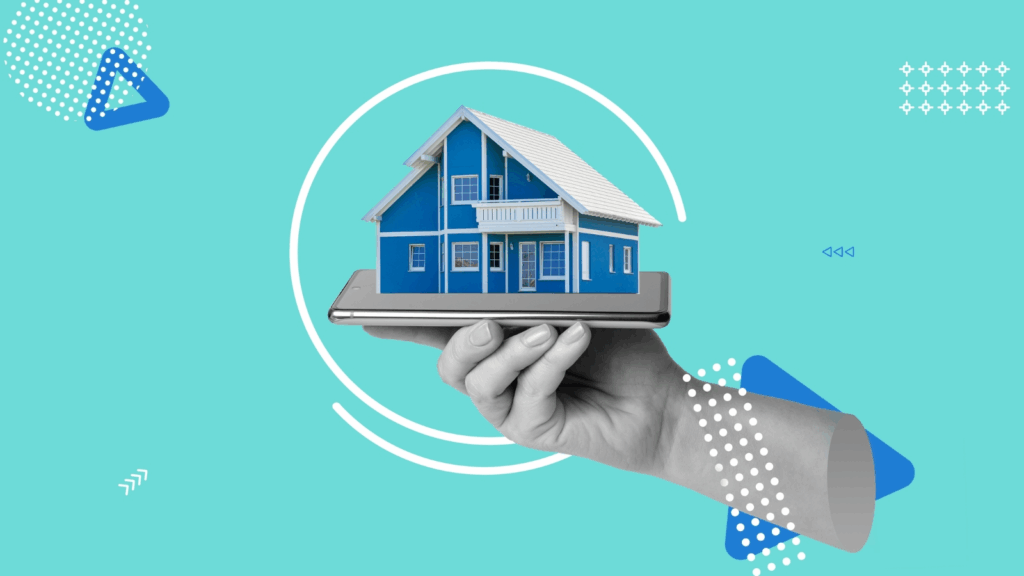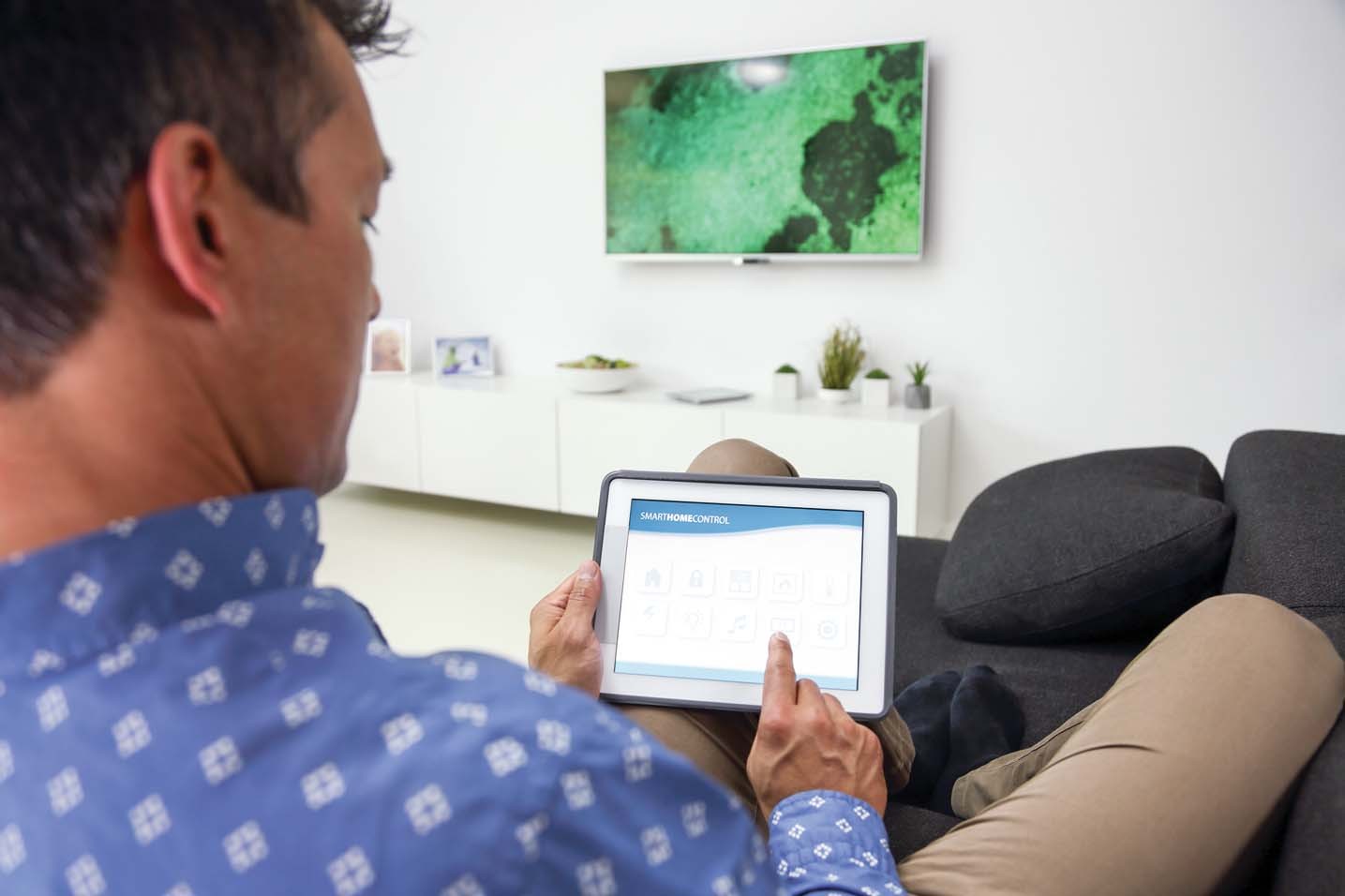Anúncios
Immerse yourself in the world of the future, where daily tasks and household chores are transformed into automated, efficient, and sophisticated systems. Imagine waking up to the sound of your favorite tune playing on your smart speaker, your coffee already brewing, your curtains automatically drawing open to let in the morning sunlight, and your car starting up on its own. All of this and more is possible in the realm of Smart Homes, where cutting-edge technology and innovation are seamlessly integrated into your everyday life, paving the way for the cities of tomorrow.
Venture further into this post and uncover the breathtaking possibilities that the future holds. Discover how smart homes, using the latest technologies such as Artificial Intelligence (AI), Internet of Things (IoT), and machine learning, are not just transforming our daily routines, but also reshaping the infrastructure of our cities. Dive into how these advanced technologies are being leveraged to create energy-efficient, sustainable, and convenient living environments, significantly enhancing our quality of life.
Anúncios
Whether you are a tech enthusiast, an urban planner, a homeowner, or simply curious about what the future holds, this post will serve as a comprehensive guide. We’ll delve into the latest trends in smart home technology, discuss how these advancements are playing a pivotal role in shaping urban development, and explore the role of innovation in driving this revolution. Join us on this fascinating journey into the world of smart homes and the cities of tomorrow.
Understanding Smart Homes
In the most basic terms, a Smart Home is a residence equipped with a range of interconnected devices that automate tasks normally handled by humans. These devices include sensors, lights, heating and air conditioning systems, cameras, appliances, and even locks, all of which can be remotely controlled by a smartphone or computer.
Anúncios

These technologies leverage the power of the Internet of Things (IoT), an advanced technological system that allows objects to communicate with each other through internet connectivity. For instance, a smart refrigerator can analyze your grocery usage, suggest healthy recipes, and even automatically order food items that are running low.
Key Components of a Smart Home
- Centralized Control System: This is essentially the brain of the smart home. It allows for the integration of all the devices and systems in the home, facilitating communication between them.
- Smart Devices: These are the various appliances and systems that can be controlled remotely. They range from security systems to thermostats to lighting systems and more.
- User Interface: This is the medium through which the user interacts with the system. It could be a smartphone app, a computer program, or even voice commands through a smart speaker.
Advantages of Smart Homes
The benefits of smart homes are vast, extending far beyond mere convenience. Firstly, they offer the potential for significant energy savings. Smart thermostats, such as Google Nest or ecobee, can learn a homeowner’s habits and adjust heating and cooling accordingly. They optimize temperature settings when the house is empty or when people are sleeping, resulting in lower utility bills and reduced energy waste. Similarly, smart lighting systems like Philips Hue or LIFX can turn off automatically when a room is unoccupied, or adjust brightness based on natural light availability, further minimizing electricity consumption.
Another major advantage is the enhancement of home security. Integrated smart security systems can include video doorbells, such as Ring or Nest Hello, which allow homeowners to see and communicate with visitors remotely. Smart locks, motion sensors, and surveillance cameras work together, providing real-time alerts in case of suspicious activities. This creates an environment where security is proactive rather than reactive, significantly increasing peace of mind for residents whether they are home or away.
Moreover, smart homes can be invaluable for the elderly or disabled. Features like voice-activated assistants (e.g., Amazon Alexa, Google Assistant) can help individuals perform tasks such as controlling lights, adjusting the thermostat, or contacting emergency services without physically moving around. Remote health monitoring devices can track vital signs and send alerts to caregivers or medical professionals if an anomaly is detected, allowing for immediate intervention and enabling seniors to maintain independence longer.
Additionally, smart home technology introduces a level of customization and comfort that was once unimaginable. Residents can create “scenes” or “routines” where, for example, a single voice command can dim the lights, close the blinds, play relaxing music, and adjust the room temperature — perfect for relaxing after a long day.
Smart appliances, such as Samsung Family Hub refrigerators or Whirlpool smart ovens, can streamline household management by offering recipe suggestions based on available ingredients, sending notifications when groceries are low, or even allowing homeowners to preheat the oven remotely.
Another subtle yet impactful benefit is improved home valuation. Real estate markets are increasingly recognizing the value of smart features. Homes equipped with smart thermostats, security systems, or energy-efficient devices can command higher selling prices and appeal to a broader demographic, particularly tech-savvy buyers looking for move-in-ready properties with modern amenities.
Environmental Impact of Smart Homes
Another major advantage of smart homes is their tremendous potential to minimize environmental impact. Energy efficiency is at the heart of smart home ecosystems. Through optimized control of heating, cooling, lighting, and even water usage, smart homes can significantly reduce greenhouse gas emissions and help combat climate change.
Smart irrigation systems, like Rachio or Orbit B-hyve, can intelligently adjust watering schedules based on local weather forecasts, soil moisture levels, and seasonality, preventing unnecessary water waste. Such systems are especially important in drought-prone areas, offering both environmental benefits and substantial cost savings for homeowners.
In addition, many smart homes incorporate renewable energy solutions. Solar panel systems, such as those provided by Tesla Solar or SunPower, can be integrated with smart inverters and batteries like the Tesla Powerwall, allowing homeowners not only to generate their own clean energy but also to store it for use during peak demand periods or power outages.
By reducing reliance on non-renewable energy sources and encouraging energy self-sufficiency, smart homes can drastically shrink individual carbon footprints. When adopted at scale across neighborhoods and cities, these technologies could drive significant progress towards achieving global climate goals.
Furthermore, smart grids and smart metering technologies work in tandem with smart homes to optimize energy distribution and consumption on a broader scale. During peak hours, smart homes can automatically reduce their demand, contributing to grid stability and preventing blackouts, while at the same time benefiting from lower energy costs.
Even small habits, encouraged and reinforced by smart home feedback systems, can have cumulative environmental benefits. For instance, smart apps that monitor and report energy usage patterns can nudge users towards more sustainable behaviors by showing real-time data on their consumption and suggesting actionable improvements.
Broader Social Impacts of Smart Homes
Beyond the individual benefits, smart homes also have societal implications. In aging populations, the combination of smart health monitoring and remote assistance can relieve some of the pressure on healthcare systems by enabling aging-in-place solutions, reducing the need for assisted living facilities, and promoting independence.
Smart homes can also contribute to greater inclusivity. People with mobility impairments, vision loss, or other disabilities can achieve a greater degree of autonomy when devices are voice-controlled, automated, or remotely managed. This democratization of control is a key step toward more equitable living environments.
From an urban planning perspective, smart homes form the building blocks of smart cities, where connected infrastructure, efficient resource management, and data-driven decision-making come together to create safer, cleaner, and more efficient communities.
Another fascinating emerging trend is community energy sharing. With smart homes equipped with renewable energy sources and storage solutions, neighborhoods can potentially share excess energy peer-to-peer through blockchain-enabled platforms. This could revolutionize local economies and democratize access to clean energy.
Conclusion of This Section
In essence, the advantages of smart homes stretch far beyond the convenience of automating lights or remotely locking the front door. They represent a paradigm shift in how we interact with our living spaces, manage our resources, protect our loved ones, and contribute to a healthier planet. Through a thoughtful integration of technology, smart homes have the potential not only to transform individual lifestyles but also to address larger societal and environmental challenges.
While some hurdles remain — particularly regarding security, privacy, and accessibility — the continued evolution of smart technologies promises a future where homes are not just shelters, but active participants in creating a more sustainable, safe, and connected world.
Challenges of Implementing Smart Homes
Despite the undeniable benefits, there are notable challenges to implementing smart home technology that must be carefully addressed to ensure its widespread success and adoption.
Privacy and security concerns are foremost among these challenges. With so many interconnected devices constantly collecting, transmitting, and storing personal data, the risk of cyberattacks, data breaches, and unauthorized access significantly increases. Hackers could potentially exploit vulnerabilities in poorly secured devices, gaining access not only to personal information but also to sensitive systems such as security cameras, door locks, or even energy management systems. Ensuring robust encryption, secure authentication protocols, and regular software updates is essential to safeguard users’ privacy and maintain trust in smart technologies.
Interoperability is another persistent hurdle. With a wide array of manufacturers and platforms offering smart home products, achieving seamless communication among devices can be complex. Without standardized protocols, users may experience compatibility issues, where devices from different brands fail to integrate properly, leading to a fragmented and frustrating user experience. Efforts such as the development of universal standards like Matter (supported by Apple, Google, Amazon, and others) aim to simplify interoperability, but full implementation will take time and industry-wide cooperation.
Additionally, cost barriers, technological complexity, and user education are also factors that can limit adoption, particularly among less tech-savvy or lower-income populations. Overcoming these challenges will be critical to realizing the full potential of smart homes in the future.
Overcoming Implementation Challenges
Technological advances are steadily overcoming these challenges. For instance, encryption and authentication protocols can help secure smart home networks, while standards and protocols like ZigBee and Z-Wave are improving interoperability.
Moreover, awareness and education about the benefits of smart home technology can help overcome resistance to its adoption.
Smart Homes and the Future
Smart homes are paving the way for the cities of tomorrow. They’re part of a larger trend towards smart cities, where technology is used to enhance the quality of life for residents and make cities more efficient and sustainable.
Role of Artificial Intelligence (AI)
AI is expected to play a key role in the evolution of smart homes. AI can learn from a homeowner’s habits and preferences, and then make decisions based on that data. This could result in homes that are more responsive and intuitive than ever before.
Internet of Things (IoT)
The Internet of Things (IoT) is another key driver of the smart home revolution. As more devices become IoT-enabled, the possibilities for home automation become virtually limitless. From smart refrigerators that can order food when supplies run low, to thermostats that adjust the temperature based on your schedule, IoT is making homes smarter and lives easier.
In conclusion, smart homes represent an exciting frontier in technology and innovation. They offer the promise of more comfortable, efficient, and secure living, while also paving the way for the sustainable cities of tomorrow.
Conclusion
In summary, Smart Homes are truly revolutionizing the way we live, contributing significantly to the development of the cities of tomorrow. By harnessing cutting-edge technology and innovation, these intelligent abodes are promoting enhanced comfort, convenience, security, and energy efficiency. Not only do they offer personalized automation, but they also provide valuable insights into our daily habits, helping us to live healthier, more productive, and more sustainable lives. Furthermore, through the integration of IoT, AI, and machine learning, Smart Homes are continuously evolving, offering immense potential for growth, expansion, and new opportunities within the technology industry.
Beyond personal convenience, Smart Homes also support broader societal goals, such as reducing carbon footprints, optimizing energy usage, and improving the overall efficiency of urban infrastructure. They encourage mindful consumption and contribute to a greater awareness of sustainability practices, making them an essential part of global environmental strategies.
However, challenges related to privacy, cybersecurity, and device interoperability remain critical areas of concern. It is vital that stakeholders across industries—technology developers, government bodies, cybersecurity experts, and consumers—collaborate to establish robust standardized protocols and ethical guidelines. Only through a collective effort can we ensure that the advancement of Smart Homes remains secure, equitable, and beneficial to all.
Despite these hurdles, the future of Smart Homes is undoubtedly bright, promising a new era of smart living that merges technology seamlessly with human-centric design. As we continue to embrace this technological revolution, one thing is certain: Smart Homes are not merely a passing trend—they represent a fundamental shift in how we perceive and interact with our living spaces, shaping the very fabric of future urban life.

